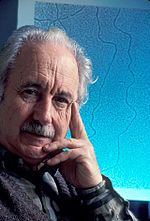Viroid facts for kids
Viroids are the tiniest things known that can cause diseases. They are much smaller than viruses. Viroids are made of a short, circular piece of RNA. Think of RNA as a simple instruction manual for life. Unlike viruses, viroids do not have a protective outer shell made of protein.
Most viroids cause diseases in plants. These plant diseases can sometimes harm important crops, leading to less food being grown. The instructions inside a viroid are super tiny. They are about 80 times smaller than the smallest virus! There's also a human disease called hepatitis D virus that is similar to viroids.
Who Discovered Viroids?
Viroids were the first "sub-viral pathogens" ever found. This means they are even simpler than viruses. A scientist named Theodor Otto Diener discovered them. He was a plant expert who studied plant diseases. Mr. Diener worked at the United States Department of Agriculture in Beltsville, Maryland. He found the first viroid in 1971.
The first viroid identified was called the Potato spindle tuber viroid (PSTVd). This viroid causes a disease in potatoes. So far, scientists have found about 33 different kinds of viroids.
How Viroids Spread and Grow
Viroids can spread from one plant to another through contact. For example, if a healthy plant touches a sick plant, the viroid can move. Once inside a plant cell, the viroid uses the plant's own machinery to make copies of itself. It's like the viroid tricks the plant into making more viroids!
Images for kids
-
The way a typical viroid makes copies of itself. Touching a sick leaf can spread the viroid. The viroid gets into a plant cell through tiny openings called plasmodesmata. Then, the plant's own tools help make new viroids.
See also
 In Spanish: Viroide para niños
In Spanish: Viroide para niños



